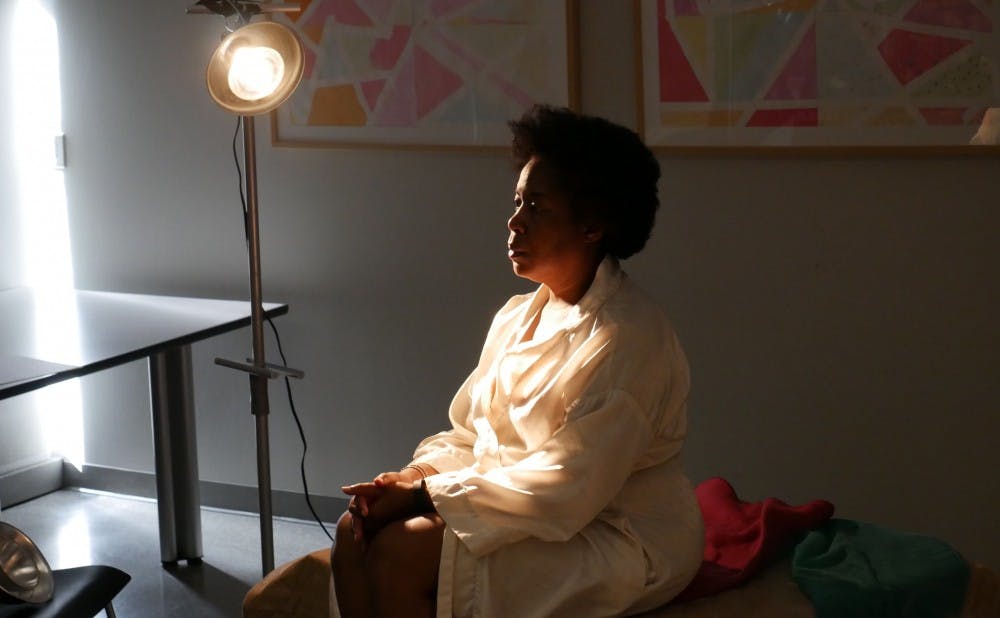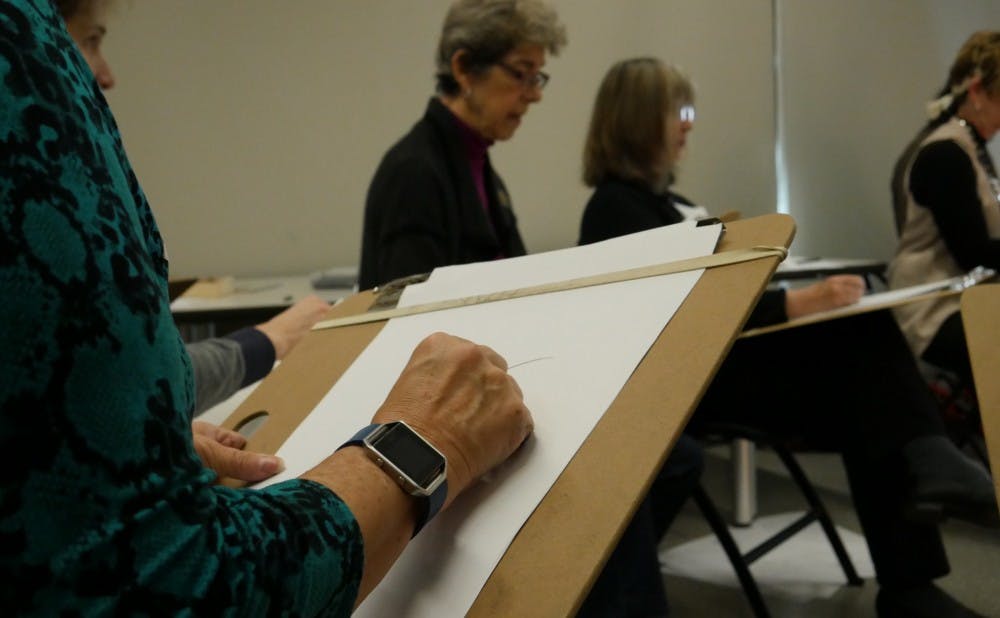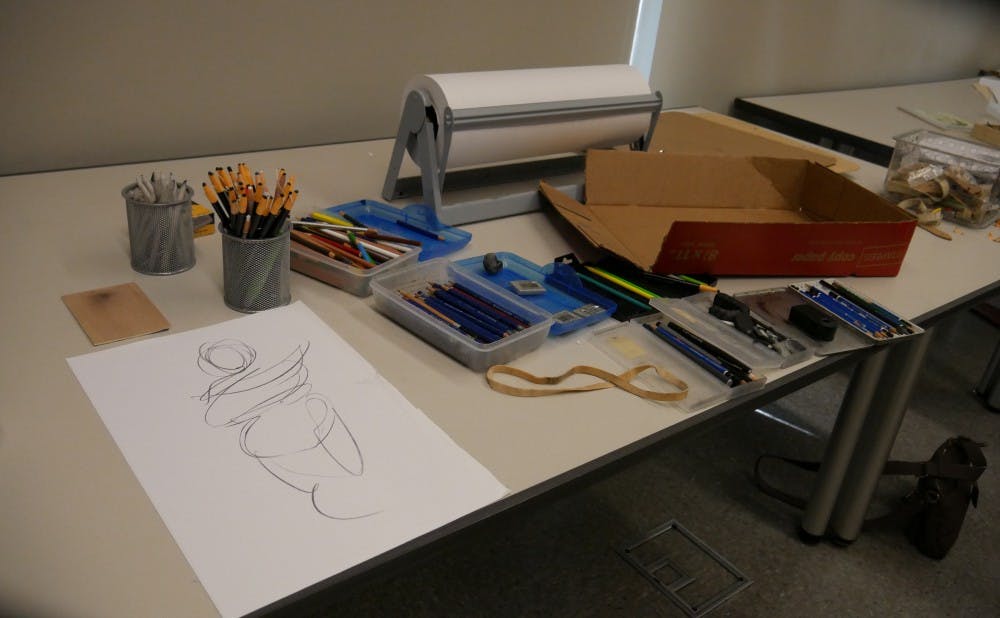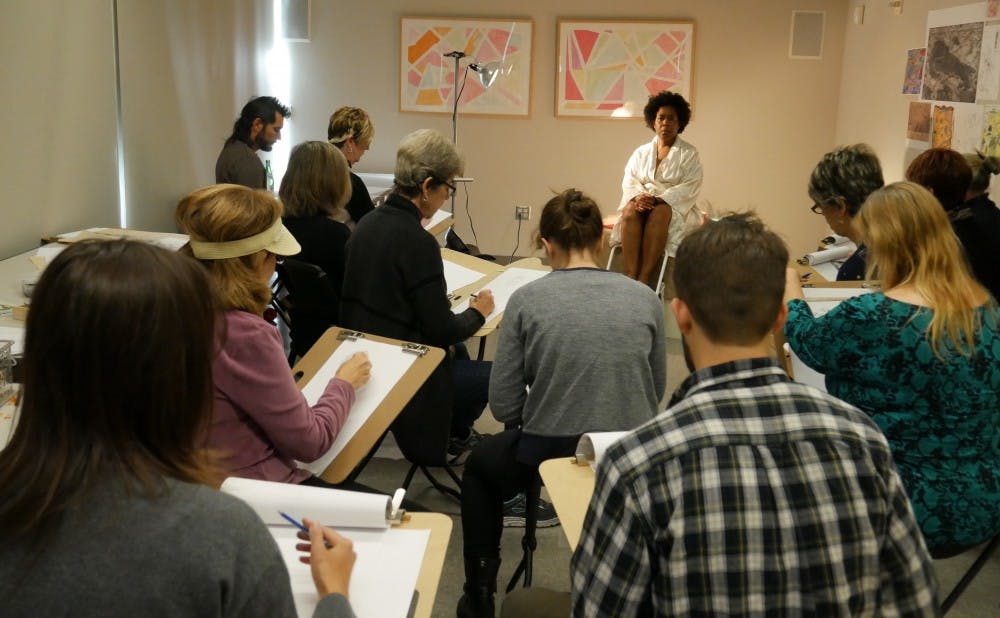Hidden away behind the galleries and brunching students at the Nasher Museum is a little classroom. Room enough for only about 20 people at a time and filled with charcoal, easels, sketch pads and various other art supplies, it’s a tranquil space isolated from the hubbub of the rest of the museum. It is in this room that artists gathered for the latest in the Nasher Creates Sketching Series: “Figure Studies and Carlo Dolci.”
A three-week course led by local artist Laura Frankstone, each class began with a one-hour sketching session in the Dolci galleries, followed by figure studies with a live model. Last week’s focus was on the face, hands and feet, and included five- and ten-minute poses designed to get students to look critically at their subject.
“It’s always good to practice and to be around other people,” said Beth Clark, a Durham resident and regular attendee of the series. “Everyone looks at the same thing, and then when you share, none of [the drawings] look the same. … That to me is just as fun as the instruction, just seeing what everybody else did.”

This month’s sketching series, centered around the Dolci gallery, represented the third such venture put on by the Nasher. All of the past classes have been taught by Frankstone, although this was the first class to utilize a figure model as a method of instruction.
In addition to their Nasher Creates three-week series, the museum also hosts monthly “Sketching in the Galleries” sessions. Instead of three consecutive weeks of instruction, these classes are taught individually by local artists and tailored to the exhibition on display.
“Even though we’ve done the series for three years now, we’ve also done monthly sketching programs throughout that entire time,” said Jessica Ruhle, the Nasher’s director of education and public programs. “Those are local artists who have a strong relationship with the museum and lead a program specific to one exhibition; they’ll have the visitors spend all of their time in one particular pavilion, really getting the chance to look closely and spend time with the artwork.”

In the past, teachers have included anyone from Duke staff and faculty members to the very artists on display, and this eclectic mix of Duke and Durhamites mirrors the attendees of the classes themselves. Although the museum is on Duke’s campus, the classes are hardly limited to Duke students and faculty, with art enthusiasts from all over the Triangle showing up.
“Raymond Nasher, for whom the building was named, was a Duke student and he was really interested in having the museum be a shared space between the community members and Duke students,” Ruhl said. “I think the sketching program is [a place] where that really happens. It does include students, staff, faculty and community members, and from a lot of those groups, a lot of people who are regulars.”
Rather than just viewing, sketching forces a visitor to stop and consider how different forms and color can create a cohesive image.
“When [you] stop and look closely at a work of art … you can see shadow and light and details that you just can’t pick up on when you’re breezing through the gallery,” said Wendy Hower, the museum’s director of engagement and marketing. “When you’re viewing art, you need to use all five senses, and I view sketching as that touch sense. We’re not allowed to touch the art, but if you can touch your sketchbook and observe that art, it’s almost like touching the art itself.”

The Nasher hopes to expand these classes with the opening of the Rubenstein Arts Center across the street. Having the new building so close will likely attract more people to the corner and into the museum itself, since students in the past have complained about the inaccessibility of the museum’s location.
“While that building is going to be great for creating art, [The Nasher] is great for presenting art, and sketching is kind of a bridge between the two,” Hower said. “I could even imagine our sketching series including live dancers over there … It could expand into whatever we want.”
Both the classes and the sketching series are open to everyone, with no art background required for attendance. For the stereotypical busy Duke student, the class can offer a chance to slow down and appreciate the art in a way one may not have otherwise. It could even make for a great date, as recommended by Hower.
“It’s not about getting it right, or doing it a particular way,” Ruhl remarked. “It’s just about exploring the medium and getting to experience something new.”
The next “Sketching in the Galleries” class will take place Saturday at the Nasher from 10:10 a.m. to 12 p.m. It will be led by local artist Scott Renk and is free with general admission to the museum.
Get The Chronicle straight to your inbox
Signup for our weekly newsletter. Cancel at any time.

